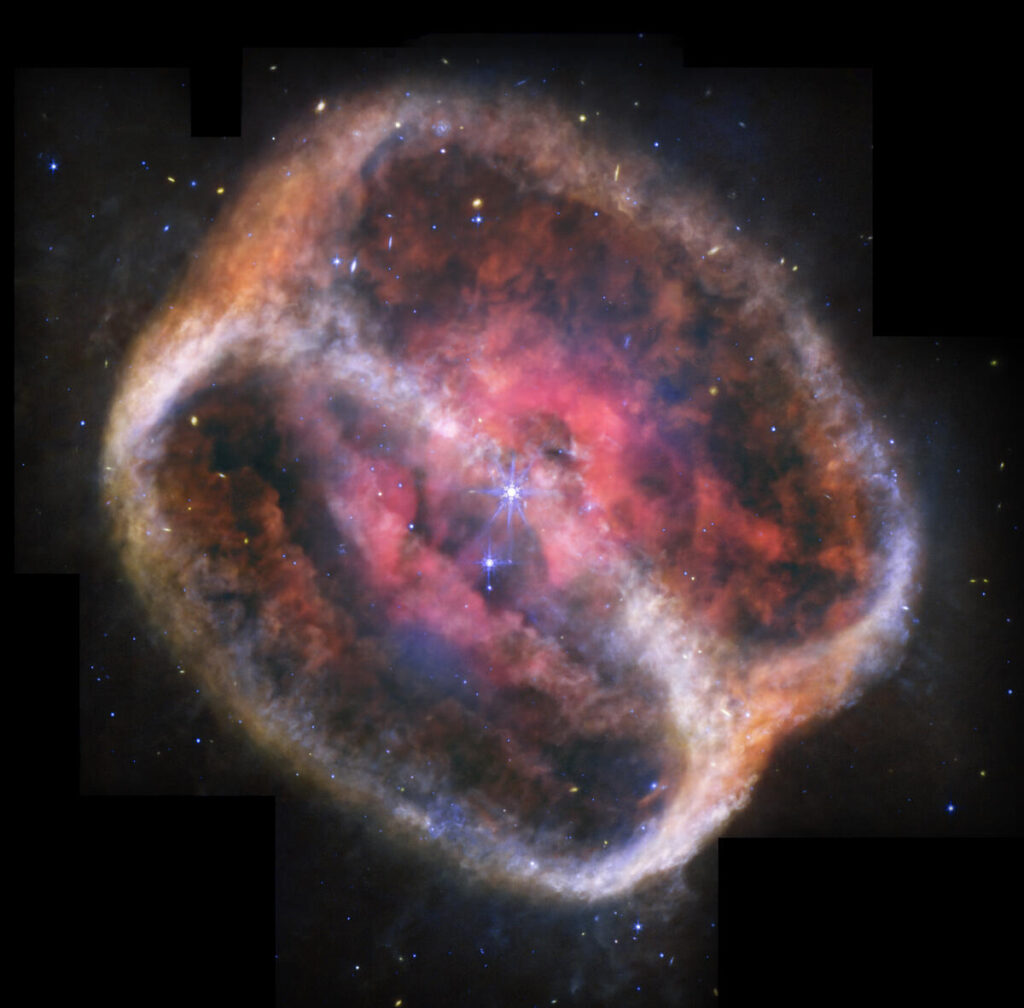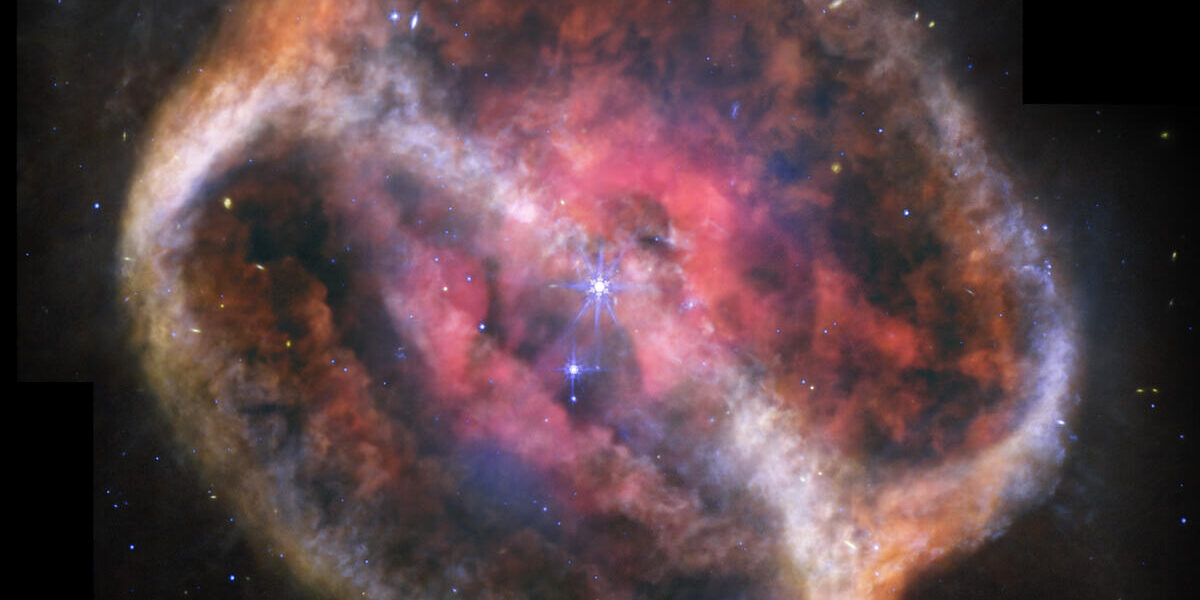NASA’s James Webb Space Telescope has revealed an extraordinary view of NGC 1514, a glowing cloud of gas and dust formed by a dying star 1,500 light-years away in the Taurus constellation.

🪐 What Webb Found:
- Tangled dust rings that look like fuzzy loops in space
- Giant holes punched through the nebula by fast-moving material
- A central binary star system locked in a 9-year orbit
- A glowing hourglass shape tilted 60 degrees, formed by stellar winds
🧡 Why It Matters:
- The nebula has been evolving for 4,000 years
- The scene was shaped by a dying star and its companion, leading to bizarre, asymmetrical rings
- Oxygen-rich but carbon-poor—rare for planetary nebulae
- Webb’s mid-infrared vision shows fine details missed by past telescopes like WISE
🔬 What’s New:
- This nebula was first noted in 1790 by astronomer William Herschel
- Now, Webb has offered the clearest view ever, revealing how stellar winds and binary interactions sculpt the cosmos


